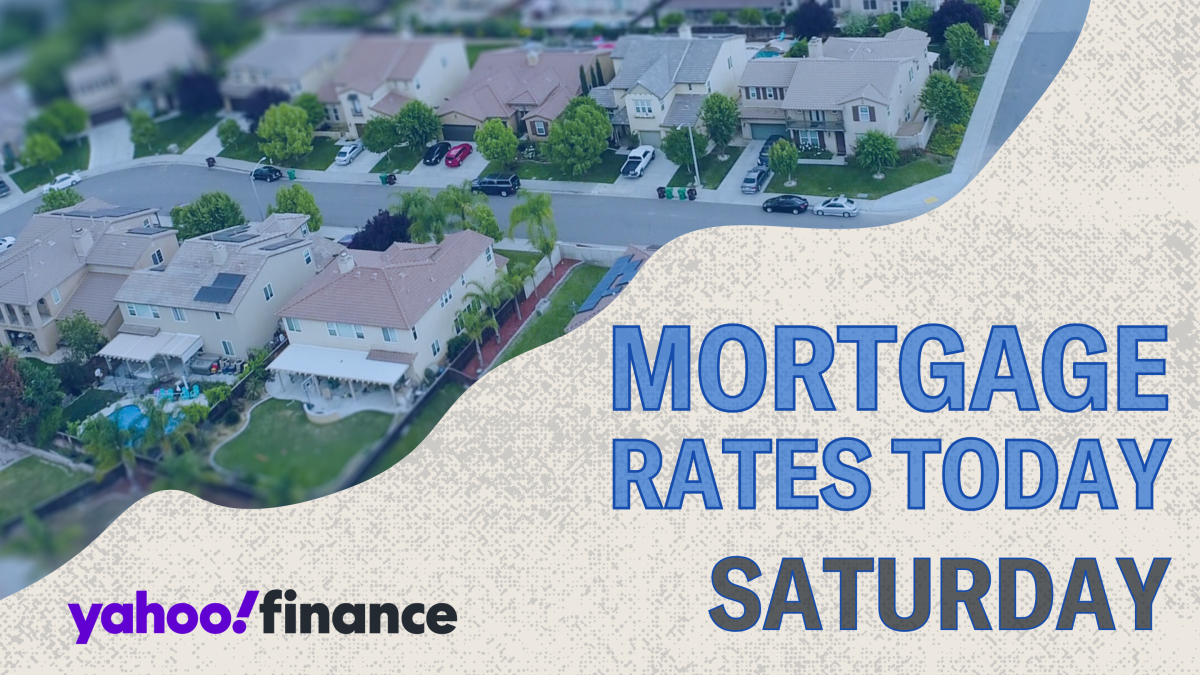Mortgage rates ticked down again today, with the average 30-year rate sitting at 6.50%.
Usually, adjustable mortgage rates start lower than fixed rates. However, today’s 5/1 ARM rate is starting at 6.66%, and the 7/1 ARM rate is 6.56% — both a little higher than what you’d get with a 30-year fixed term. When shopping for the best mortgage lenders, ask to see their fixed and adjustable rates so you can see which will end up being the better deal.
This embedded content is not available in your region.
Today’s mortgage rates
Here are the current mortgage rates, according to the latest Zillow data:
-
30-year fixed: 6.50%
-
20-year fixed: 6.08%
-
15-year fixed: 5.75%
-
5/1 ARM: 6.66%
-
7/1 ARM: 6.56%
-
30-year FHA: 5.91%
-
15-year FHA: 5.89%
-
30-year VA: 5.84%
-
15-year VA: 5.28%
-
5/1 VA: 6.08%
Remember, these are the national averages and rounded to the nearest hundredth.
Almost all mortgage rates decreased since yesterday. The only exception is the 5/1 ARM rate, which increased by just one basis point to 6.66%.
Dig deeper: When will mortgage rates go down? A look at 2024 and 2025.
30-year fixed mortgage rates: Pros and cons
There are two main advantages to a 30-year fixed mortgage: Your payments are lower, and your monthly payments are predictable.
A 30-year fixed-rate mortgage has relatively low monthly payments because you’re spreading your repayment out over a longer period of time than with, say, a 15-year mortgage. Your payments are predictable because, unlike with an adjustable-rate mortgage (ARM), your rate isn’t going to change from year to year. Most years, the only things that might affect your monthly payment are any changes to your homeowners insurance or property taxes.
The main disadvantage to 30-year fixed mortgage rates is mortgage interest — both in the short and long term.
A 30-year fixed term comes with a higher rate than a shorter fixed term, and it’s higher than the intro rate to a 30-year ARM. The higher your rate, the higher your monthly payment. You’ll also pay much more in interest over the life of your loan due to both the higher rate and the longer term.
Learn more: How to get the lowest mortgage rates
15-year fixed mortgage rates: Pros and cons
The pros and cons of 15-year fixed mortgage rates are basically swapped from the 30-year rates. Yes, your monthly payments will still be predictable, but another advantage is that shorter terms come with lower interest rates. Not to mention, you’ll pay off your mortgage 15 years sooner. So you’ll save potentially hundreds of thousands of dollars in interest over the course of your loan.
However, because you’re paying off the same amount in half the time, your monthly payments will be higher than if you choose a 30-year term.
Dig deeper: 15-year vs. 30-year mortgages
Adjustable mortgage rates: Pros and cons
Adjustable-rate mortgages lock in your rate for a predetermined amount of time, then change it periodically. For example, with a 5/1 ARM, your rate stays the same for the first five years and then goes up or down once per year for the remaining 25 years.
The main advantage is that the introductory rate is usually lower than what you’ll get with a 30-year fixed rate, so your monthly payments will be lower. (Current average rates don’t reflect this, though — fixed rates are actually lower. Talk to your lender before deciding between a fixed or adjustable rate.)
With an ARM, you have no idea what mortgage rates will be like once the intro-rate period ends, so you risk your rate increasing later. This could ultimately end up costing more, and your monthly payments are unpredictable from year to year.
But if you plan to move before the intro-rate period is over, you could reap the benefits of a low rate without risking a rate increase down the road.
Learn more: Adjustable-rate vs. fixed-rate mortgage
Is now a good time to buy a house?
It might not feel like a good time to buy a house. Recently, 30-year rates have been hovering around 6.50% to 7%, which looks terrible compared to 2021, when you could lock in a rate of 3% or lower.
It might be a better time to buy than you’d expect, though. The highest mortgage rate on record was 18.63% in October 1981, which makes a 6.84% rate not seem so bad. It’s also very unlikely that rates will drop to below 3% again anytime soon.
And even though house prices are high, they are growing less rapidly than they were a couple of years ago. And new-home construction is starting to pick up.
To sum it up, it’s still not the best time to buy a house because rates are relatively high and prices remain firm. But if the timing is right for you, your budget can accommodate the higher rates, and you’ve found the home for you, there’s no time like the present.





